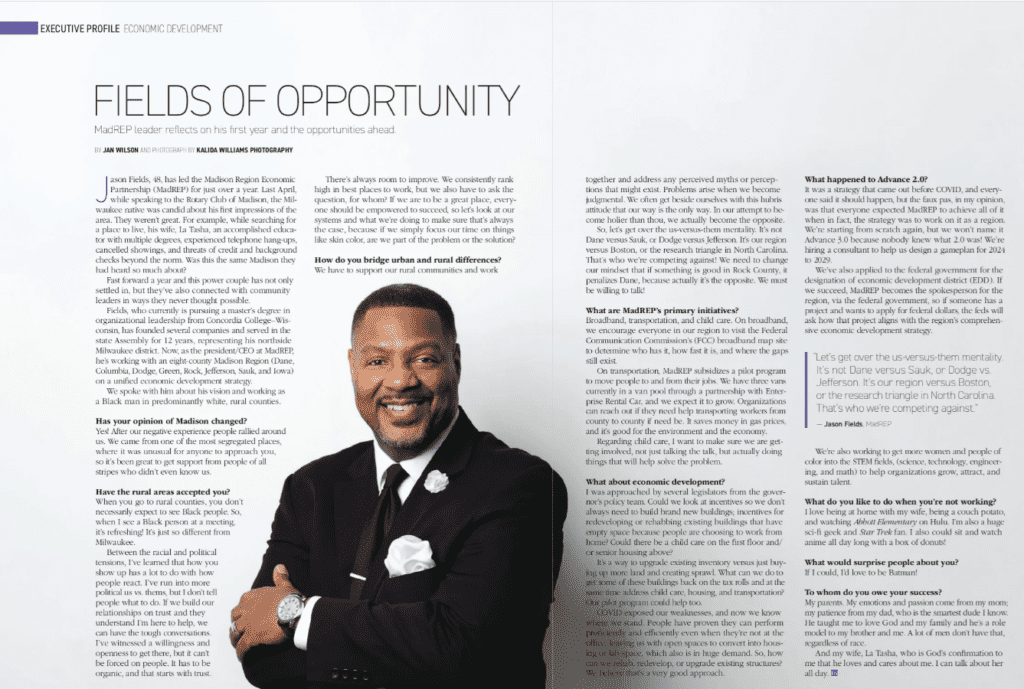![]()
When it comes to Mother Nature’s most valuable resources, the only thing more essential than freshwater is air. Humans can’t live without water for more than three days, but that is just the beginning of its importance to our homes, communities and businesses.
We’re already seeing the impact of too little water in the Western states, but too much water can also cause disaster. We recently saw the impact of torrential rains on our community, and even worse is the destructive force of hurricanes and rising sea levels on the East Coast.
At The Water Council, we believe Milwaukee’s abundant and relatively stable access to freshwater is its most valuable resource today and in the future. That’s why the headline in the recent BizTimes’ article “Time is now for Milwaukee to ready itself as a climate haven, experts say” was spot on. The Water Council and our partners are already working to prepare the community, with several exciting opportunities on the horizon. We can do more and do it better so that we are a global magnet for talent and water solutions.
Our connection to Lake Michigan is valuable not just for the water itself but for the economy that has grown up around it. The Water Council was founded in 2009 in recognition of the density of water technology companies in southeastern Wisconsin, including A. O. Smith Corp., Badger Meter, InSinkErator and Kohler Co.
The growing water crises around the world present additional opportunity for water innovators, and Milwaukee – home of some of the nation’s leading water research programs at the University of Wisconsin-Milwaukee and Marquette University, a robust water economy, and the Global Water Center, our headquarters in Walker’s Point – is well positioned to meet that need.
Even though we welcome members from around the world, more than half of our 150 members are based in Wisconsin. These include innovative companies solving pressing water challenges, such as Rapid Radicals Technology (rapid wastewater treatment), NanoAffix Science (creators of a handheld device for detecting lead in water) and ORIN Technologies (environmental remediation, including PFAS destruction).
In fact, we see an opportunity for Wisconsin to become a leader in building climate change resilience. In fall, we applied for a $1 million National Science Foundation grant to plan a regional innovation engine focused on water and energy resilience for manufacturers and utilities with lead partners MKE Tech Hub Coalition, the Wisconsin Technology Council, Marquette University and the Madison Region Economic Partnership.
The need for energy and water solutions is obvious, and we believe Wisconsin’s strong manufacturing base, excellent research universities, and leading energy and water technology companies make a strong case for building such an engine here and exporting our knowledge and solutions across the world.
Milwaukee is already a leader in water treatment, which could help the area accommodate more residents and serve as a model for other cities. For example, the Milwaukee Metropolitan Sewerage District is leading the nation in green infrastructure, including naturalizing concrete water channels, purchasing conservation easements, working with farmers to reduce fertilizer runoff, and providing free or low-cost rain barrels and rain garden materials to residents.
These efforts to “manage water where it falls,” along with MMSD’s Deep Tunnel completed in 2010, help prevent sewer overflows into Lake Michigan when heavy rain threatens to overwhelm MMSD’s water reclamation facilities. MMSD captures and cleans more than 98% of wastewater and stormwater that enters the sewer system, far higher than the EPA requirement of 85% and the totals captured by many other cities with combined sewer systems. This will become even more critical as climate change causes more extreme weather.
Businesses must also do their part in protecting our freshwater for current and future residents. At The Water Council, we work with organizations locally and worldwide on improving water stewardship. In Milwaukee, we’ve worked with companies as large as A. O. Smith and as small as Engel Tool & Forge in Milwaukee’s Harbor District, which was able to cut its water usage by a whopping 90% after implementing a closed-loop water system for cooling equipment.
Although climate change is unquestionably a global catastrophe, Milwaukee’s future remains bright and, frankly, I believe is getting even brighter. The time is now for Milwaukee to prepare itself as a climate and water haven for people seeking a place to work and raise their families. Our abundant freshwater has been essential to writing our community’s history, and today’s spirit of water stewardship and innovation will serve as an essential ingredient in writing the next chapters for Milwaukee.
Dean Amhaus is president and chief executive officer of Milwaukee-based The Water Council.




